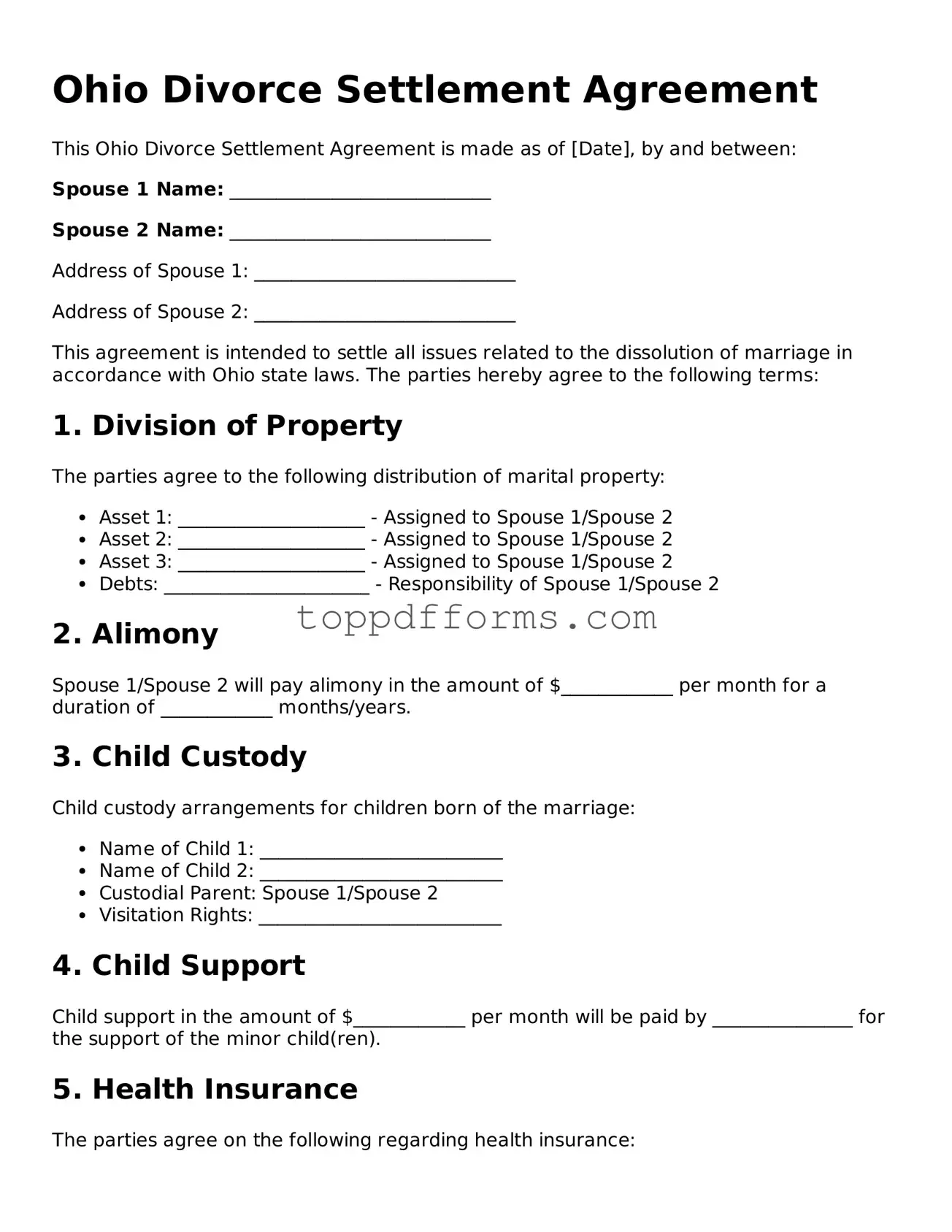What is an Ohio Divorce Settlement Agreement?
An Ohio Divorce Settlement Agreement is a legal document that outlines the terms agreed upon by both parties during a divorce. This agreement typically addresses key issues such as the division of assets and debts, spousal support, child custody, and visitation rights. By formalizing these terms, the agreement helps to ensure that both parties understand their rights and responsibilities moving forward.
How do I create a Divorce Settlement Agreement in Ohio?
To create a Divorce Settlement Agreement in Ohio, both parties must negotiate the terms they wish to include. It is advisable to have open and honest discussions about financial matters, child-related issues, and any other relevant concerns. Once both parties reach an agreement, the document should be drafted clearly and comprehensively. Many individuals choose to consult with a lawyer to ensure that the agreement complies with Ohio law and adequately protects their interests.
Is a Divorce Settlement Agreement legally binding?
Yes, once signed by both parties and approved by the court, a Divorce Settlement Agreement becomes legally binding. This means that both parties are required to adhere to the terms outlined in the agreement. If one party fails to comply, the other party may seek legal recourse to enforce the agreement. It is crucial to ensure that all terms are clearly stated to avoid misunderstandings or disputes in the future.
What happens if we cannot agree on the terms of the settlement?
If both parties cannot reach an agreement on the terms of the settlement, they may need to consider mediation or other dispute resolution methods. Mediation involves a neutral third party who can help facilitate discussions and guide both parties toward a mutually acceptable resolution. If mediation fails, the case may proceed to court, where a judge will make the final decisions regarding the divorce terms.
Can a Divorce Settlement Agreement be modified after it is finalized?
Yes, a Divorce Settlement Agreement can be modified after it is finalized, but only under certain circumstances. Typically, a significant change in circumstances, such as a job loss or a change in income, may warrant a modification. To initiate a change, one party must file a motion with the court, and both parties may need to agree to the new terms. It is important to document any changes properly to ensure they are enforceable.
Do I need a lawyer to draft my Divorce Settlement Agreement?
